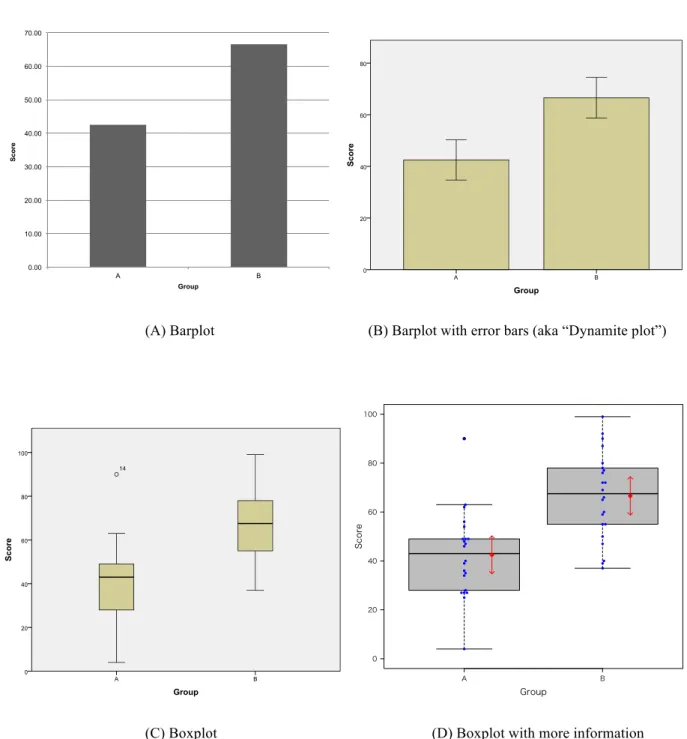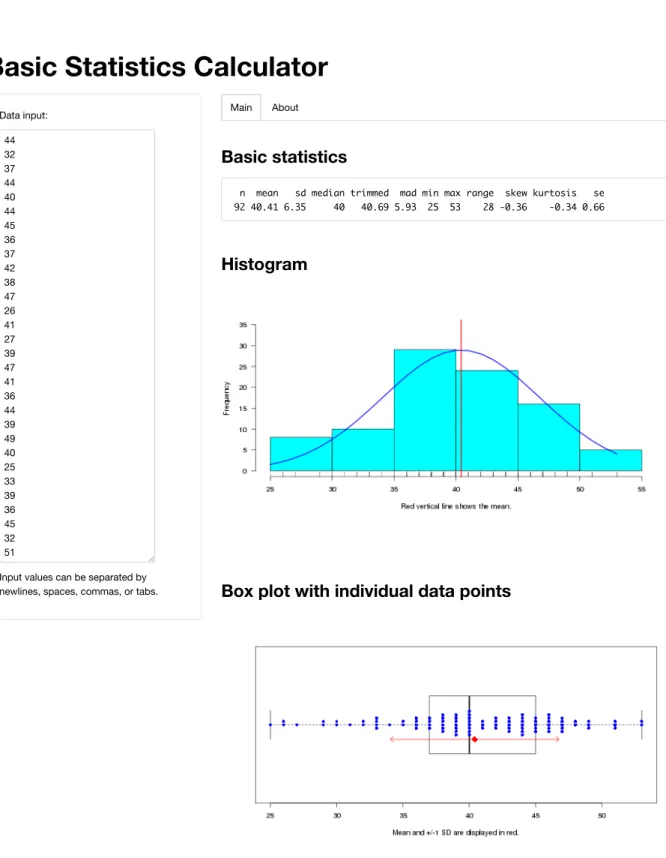for Quantitative Research in Applied Linguistics
著者 Mizumoto Atsushi, Luke PLONSKY journal or
publication title
Applied Linguistics
volume 37
number 2
page range 284‑291
year 2016‑04
権利 This is the accepted version of the
manuscript. The final, definitive version of this paper will bepublished in Applied
Linguistics by Oxford University Press, All rights
reserved.http://applij.oxfordjournals.org/cont ent/37/2/284
URL http://hdl.handle.net/10112/13013
doi: 10.1093/applin/amv025
R as a lingua franca: Advantages of using R for quantitative research in applied linguistics
Atsushi Mizumoto
Kansai University
Luke Plonsky
Northern Arizona University
This is the accepted version of the manuscript. The final, definitive version of this paper will be published in Applied Linguistics by Oxford University Press, All rights reserved.
http://applij.oxfordjournals.org/content/37/2/284
Citation
Mizumoto, A., & Plonsky, L. (2016). R as a lingua franca: Advantages of using R for quantitative research in applied linguistics. Applied Linguistics, 37, 284–291.
doi:10.1093/applin/amv025
1. Introduction
J. D. Brown’s (1991) classic paper in TESOL Quarterly, titled “Statistics as a Foreign Language,” demonstrated that teachers and even researchers in the field were not well versed in statistics. Likewise, Meara (1995) wrote, “[When I was in graduate school], anyone who could explain the difference between a one-tailed and two-tailed test of significance was regarded as a dangerous intellectual; admitting to a knowledge of one-way analyses of variance was practically the same as admitting to witchcraft in 18th century Massachusetts” (p. 341). Since then, a large body of quantitative research in TESOL has been conducted, employing a range of techniques (e.g., Loewen and Gass 2009; Plonsky 2013). In this sense, statistics is no longer “a foreign language,” but rather it is a communicative and analytical tool for conducting and reporting our research practice. At the same time, however, Loewen et al.’s (2014) replication of Lazaraton et al.’s (1987) survey of researchers’ knowledge of statistics revealed that statistical literacy of researchers in the field has not changed much in the last two decades.
A number of recent works have sought to address this weakness and to move researchers in applied linguistics toward more appropriate analyses. In many cases, the reporting of effect sizes and confidence intervals, for example, seek to align L2 research with what is considered best practice in other social sciences such as education and psychology (Cumming 2012). In other cases, novel techniques such as bootstrapping and mixed effects modeling have also been introduced as a means to advance and potentially improve quantitative data analysis in the field (Baayen 2008; Cunnings 2012; Larson-Hall 2015; Larson-Hall and Herrington 2010; Plonsky, Egbert and LaFlair 2014).
In an effort to keep abreast with and apply these and other recent statistical advances, we
argue in this paper in favor of the use of R, a statistical software environment, for quantitative
applied linguistics research. In order to facilitate the use of R, we also introduce an R-based web application recently developed by the first author. Throughout the paper, we advocate the use of R as a lingua franca (communication tool) for applied linguists. However, it is not our intention to “sell” this particular software to the readers of Applied Linguistics or to anyone, for that
matter. Rather, we seek to inform a general applied linguistics audience of how recent advances in quantitative data analyses have been driven by—and can be fruitfully utilized using—R. We are also pragmatic in our approach, and we recognize that R, like any program, has its
weaknesses. Therefore, our goal is achieved if, after reading this article, readers make more informed decisions concerning statistical software depending on their research foci and needs.
2. Advantages of Using R
R is a free, open-source computer language and software environment for statistical computing and graphics (R Core Team 2014). Compared with SPSS, it is not used by many researchers in applied linguistics (Loewen et al. 2014). In Loewen et al.’s (2014: 372) survey, SPSS was found to be used by 69% of the respondents. In contrast, R was used by only 15% of the respondents, even less than the 17% who conducted their analyses “by hand.” Despite its lack of popularity in our own field, the use of R in other disciplines has been rapidly gaining in
popularity and, according to Muenchen (2014), R recently “became the most widely used analytics software for [all] scholarly articles.” We first outline the reasons why R is popular among researchers in other fields and why we recommend its use for analyses in quantitative applied linguistics research as well.
The reproducibility of data analysis is perhaps the most compelling advantage provided
by R. As applied linguistics continues to mature, more attention will likely continue to be paid to
research synthesis/meta-analysis as well as replication research (Oswald and Plonsky 2010; Porte 2012). Further momentum in this area is found in the IRIS (Instruments for Research Into
Second Language Learning and Teaching) database launched in 2012 as “a free, searchable, up- and downloadable collection of instruments, materials and stimuli that are used to elicit data for research into second and foreign languages” (IRIS n.d.) to which many international journals in applied linguistics, including Applied Linguistics, have pledged their support. These are all signs
of the field’s maturity and emphasis on reproducibility of research.
In order to examine the reproducibility of primary studies and further promote replication, however, the data itself and data analytic procedures must also be shared. And in fact, journals and funding agencies increasingly require data to be made publicly available after publication. In addition to data sharing, open access to R codes will facilitate reproduction and replication of data analysis. This is possible because R is a command line driven program. With R, you only need to run the code to replicate the analyses and produce the exact same results obtained by the original study. This feature of R also enables researchers to experiment with and learn from alternate analytical approaches based on the same dataset.
Our next point is also related to the reproducibility of data analysis. Statisticians and computer scientists have developed thousands of R packages. These packages can be used for conducting nearly any analysis imaginable. User-friendly R manuals and textbooks, three of which have been written by linguists, of course also come with R codes (Baayen 2008; Gries 2013; Larson-Hall 2015). In applied linguistics, more advanced statistical analyses and modeling have been introduced in recent years such as:
• bootstrapping (Larson-Hall and Herrington 2010; Plonsky et al. 2014);
• hierarchical linear modeling / multilevel modeling / mixed-effect modeling (e.g., Baayen, Davidson and Bates 2008; Cunnings and Finlayson in press; Gries 2015);
• Bayesian analysis (Gudmestad, House and Geeslin 2013); and
• quantile regression (Chen and Chalhoub-Deville 2014).
These were all conducted with R, enabling codes and packages to be provided or cited.
When R codes are provided, they are usually accompanied by the dataset, which enables researchers to re-run the analyses themselves. This hitherto unprecedented type of
communication of data analysis is greatly facilitated with R, and it is precisely for this reason that we regard R as a (potential) lingua franca for quantitative data analysis in applied linguistics.
Yet another benefit of R is its ability to produce high-quality graphics. Because R is a command line driven language, the researcher specifies graphic elements with code. This is challenging for beginners, but learning how to make a plot with R provides the researcher with the autonomy to go beyond program defaults to produce more effective data visualizations, a perennial problem in applied linguistics (e.g., Larson-Hall and Plonsky 2015).
Figure 1 shows an example of R’s superiority in producing graphics even for simple
purposes. The same data are used to plot four types of graphs with the amount of information
increasing from (A) to (D). Specifically, in (A, made in Excel), the barplot contains only the
means, while barplot (B, SPSS) has the means and error bars. The boxplot (C, SPSS) is an
improvement on these graphs in that it includes more information (i.e., quartiles, median,
minimum and maximum scores, and outliers) than the barplot with error bars (B). Finally,
though, the boxplot (D), created in R, is superior to all others in that it allows the researcher to
show not only all the information provided by the SPSS graph but also individual data points
(beeswarm plot), their means, and error bars.
(A) Barplot (B) Barplot with error bars (aka “Dynamite plot”)
(C) Boxplot (D) Boxplot with more information
Figure 1. Comparisons of different plots with the same data.
0.00 10.00 20.00 30.00 40.00 50.00 60.00 70.00
A B
Score
Group
&[ページ タイトル]
Group
B A
Score
80
60
40
20
0
Error Bar: 95% CI
ページ 1
&[ページ タイトル]
G グラフ
Group
B A
Score
100
80
60
40
20
0
14
ページ 1
A B
0 20 40 60 80 100
Group
Score

